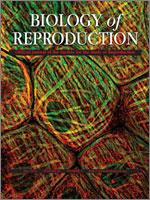Repetitive sequences, especially transposon-derived interspersed repetitive elements, account for a large fraction of the genome in most eukaryotes. Despite the repetitive nature, these transposable elements display quantitative and qualitative differences even among species of the same lineage. Although transposable elements contribute greatly as a driving force to the biological diversity during evolution, they can induce embryonic lethality and genetic disorders as a result of insertional mutagenesis and genomic rearrangement. Temporary relaxation of the epigenetic control of retrotransposons during early germline development opens a risky window that can allow retrotransposons to escape from host constraints and to propagate abundantly in the host genome. Because germline mutations caused by retrotransposon activation are heritable and thus can be deleterious to the offspring, an adaptive strategy has evolved in host cells, especially in the germline. In this review, we will attempt to summarize general defense mechanisms deployed by the eukaryotic genome, with an emphasis on pathways utilized by the male germline to confer retrotransposon silencing.
How to translate text using browser tools
22 February 2012
Male Germline Control of Transposable Elements
Jianqiang Bao,
Wei Yan
ACCESS THE FULL ARTICLE

Biology of Reproduction
Vol. 86 • No. 5
May 2012
Vol. 86 • No. 5
May 2012
epigenetics
Genetics
germline
infertility
small noncoding RNAs
spermatogenesis
transposon




